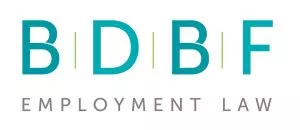The Home Secretary, Priti Patel, has avoided being sanctioned for bullying on the grounds that no formal complaints were made against her at the time and she was unaware of the impact of her behaviour. In this article, we consider the learning points for employers and suggest a strategy for dealing with "off the record" complaints of bullying.
Why is bullying in the news again?
As national anti-bullying week drew to a close, news broke that a Cabinet Office inquiry had found evidence that the Home Secretary, Priti Patel, had bullied staff and broken the ministerial code. The alleged behaviour included shouting, swearing, belittling people and making unreasonable demands.
It later emerged that Ms Patel had a history of such behaviour. In 2015, Ms Patel was accused of bullying a civil servant in the Department for Work and Pensions – the case was kept out of the press after a settlement payment was made to the victim. In 2017, civil servants at the Department for International Development alleged that Ms Patel had humiliated civil servants in front of colleagues.
The Cabinet Office inquiry found that Ms Patel was "action orientated", could be "direct" and felt justifiably frustrated with civil servants on occasions. However, this manifested itself in "forceful expression, including some occasions of shouting and swearing" which had upset staff. The inquiry noted that Ms Patel had failed to treat her civil servants with consideration and respect and that her approach amounted to "...behaviour that can be described as bullying in terms of the impact felt by individuals". It concluded that such behaviour breached the ministerial code, even if this was unintentional.
Yet her boss, the Prime Minister, declined to sack Ms Patel, instead suggesting that the victims and their managers were at fault for failing to complain formally about the bullying at the time. He pointed to the fact that the inquiry had found that no feedback had been given to Ms Patel regarding her behaviour and that she was "...unaware of the issues that she could otherwise have addressed".
Why is the Priti Patel case of interest to employers?
What's interesting is that the explanation given for Ms Patel escaping serious sanction was that the alleged victims did not raise bullying complaints at the time. She was, therefore, unaware of the impact of her behaviour and unable to take corrective action. In the employment context, it is questionable whether such a defence would hold water – particularly as most employers will have a written bullying and harassment policy in place which stipulates which forms of behaviour are unacceptable in the workplace (and this would usually include things like shouting, swearing and belittling colleagues).
Yet it's also true that grey areas do exist. What may be considered as firm management action by line managers, may be viewed as oppressive behaviour by their subordinates. It's particularly easy to envisage how such scenarios could arise amongst staff working at home during the COVID-19 pandemic. With staff at a physical distance, there is a lower risk of flashpoints of aggressive behaviour, however, remote bullying can manifest itself in other forms, for example, micromanagement, exclusion from virtual meetings or by sending tersely worded communications. Further, small issues may fester in a remote working environment, where face to face contact is limited and the usual social bonds that bind teams together are absent.
In such circumstances, unless perpetrators are made aware of the impact of their behaviour, they will be unable to take steps to correct it. Therefore, it's important for employers to support employees to come forward with bullying complaints. However, a common problem that employers face in these kinds of situations is that the victim does not want to "rock the boat" and so will seek to make an informal or off the record complaint.
This puts the employer in a difficult position. On one hand, they are now on notice of the alleged bullying and may be exposed to risk if they do nothing. On the other hand, the victim does not want them to take action.
How should employers respond to informal complaints of bullying?
There is no "one size fits all" answer to the question of how an employer should respond to such a complaint. In practice, employers will need to grapple with a number of preliminary questions in order to decide upon a suitable response.
Is it bullying and is it a grievance?
In contrast to the related concept of discriminatory harassment, there is no legal definition of bullying. The non-statutory Acas Guide for Managers and Employers on Bullying and Harassment at Work offers a wide-ranging definition of bullying as: "Offensive, intimidating, malicious or insulting behaviour, an abuse or misuse of power through means that undermine, humiliate, denigrate or injure the recipient". It is not necessary for such treatment to be related to a protected characteristic under the Equality Act 2010. As above, the employer's internal policies will usually spell out what types of behaviour may be viewed as bullying.
The statutory Acas Code of Practice on Disciplinary and Grievance Procedures (Acas Code) defines grievances as:"...concerns, problems or complaints that employees raise with their employer". This very broad definition means that any disclosure by employees that they are (or someone else is) being bullied at work would be a grievance for the purposes of the Acas Code.
In short, the learning point is that even an informal complaint about bullying may amount to a grievance requiring some form of response from the employer. In appropriate cases, it may be that the response is limited to informal resolution. However, what an employer should not do is park the matter and hope that it blows over. Action of some sort will almost always be required.
What is the employee trying to achieve?
In deciding upon the right strategy, it's helpful for the employer to try to understand the employee's underlying motivation for raising a complaint that they say they simply want "noted".
Employers should not be tempted to avoid dealing with a complaint simply because it's felt that an overly sensitive employee is "venting" and looking for moral support. However, it may lead an employer to favour an informal response. Where matters appear to be relatively minor, and the employee over-sensitive, resolution with the support of HR may be all that's required to get things back on track.
Yet employers should exercise caution when making such assessments and ensure that they build up a full picture of what has happened. As the Acas Guide to Bullying highlights: "People being bullied or harassed may sometimes appear to overreact to something that seems relatively trivial, but which may be the last straw in a series of incidents". Indeed, in the case of Green v DB Group Services (UK) Ltd [2006] EWHC 1898 (QB) the High Court held that the cumulative effect of the alleged conduct had to be considered, rather than individual incidents. In that case, Ms Green was subjected to a long-term campaign of mean and spiteful behaviour which included actions such as blowing raspberries as she walked by, telling her she "stank", removing her image from the company intranet and hiding her work. In isolation, acts of this nature may seem relatively minor but, together, they will expose the employer to significant risk if no action is taken. In Green, the bullying campaign led Ms Green to have a nervous breakdown and she was award £817,000 in damages.
Alternatively, by raising a bullying complaint informally, the employee may be preparing the ground for a future formal grievance if the behaviour continues. The ability to refer to earlier examples of bullying behaviour would strengthen a future complaint by helping to demonstrate that there has been a campaign of bullying.
What legal claims could the employee have?
Although there is no express legal claim for bullying, there are a suite of other legal claims available to an employee who has been the victim of bullying including claims for:
- constructive dismissal;
- personal injury;
- failure to make reasonable adjustments (if disabled);
- discriminatory harassment (if the bullying relates to a protected characteristic such as sex, race, age, religion, sexual orientation);
- victimisation (if the bullying followed a protected act such as complaining of sexual harassment);
- whistleblowing detriment (if the bullying was as a result of the employee raising concerns about, for example, regulatory breaches); and/or
- harassment under the Protection from Harassment Act 1997.
When deciding on how to respond to an informal bullying complaint, employers should, as far as possible, consider the exposure to these legal claims. The more serious the complaint, the higher the legal risk and the more likely it is that the employer will need to pursue a formal approach.
What other factors are important?
Employers should consider other issues such as compliance with internal policies and procedures, and also with a regulator's expectations, if applicable. By way of example, financial services employers subject to the Financial Conduct Authority's (FCA) Senior Managers and Certification Regime must assess "senior managers" and "certification employees" to be "fit and proper". The "fit and proper" test focuses on honesty, integrity and reputation amongst other things. Accordingly, allegations of bullying may mean that a Senior Manager or a Certification Employee is not fit and proper. Where such allegations are raised, it is imperative that the employer investigates to decide whether those allegations are well-founded and should be reported to the FCA.
Employers should also consider the wider consequences for their organisation of leaving bullying unchecked. The Acas Guide to Bullying highlights that the problem can fester and cause serious problems for the employer including poor morale and employee relations; loss of respect for managers and supervisors; poor performance; lost productivity; absences; resignations; and reputational damage.
What are the employer's options?
The employer should consider all of these preliminary issues in light of the precise nature of the complaint, including the severity of the alleged bullying, the length of time it has been going on, the number of victims and the seniority of the perpetrator. They will then be in a position to form a view about what steps to take in response. There are four possible options.
- Option 1 – Note the complaint and do nothing else: this is a high-risk option and should be avoided in most cases.
- Option 2 – Informal resolution: where the complaint appears relatively minor, a better option for the employer would be to propose some form of informal resolution such as a supported discussion or mediation.
- Option 3 – Formal procedure with the employee's participation: in more serious cases a formal investigation should be undertaken. This is the only route by which the employer can reach a conclusion on whether the allegations are true or false and issue sanctions and take remedial action.
- Option 4 – Formal procedure without the employee's participation: there may be cases where the employee is unwilling to pursue a formal complaint under any circumstances. This puts the employer in the difficult position of having to go against the employee's wishes. However, in serious cases the risk of doing nothing is too high. Inaction jeopardises the health and safety of the employee (and possibly other employees), fails to afford the perpetrator the chance to explain their behaviour and exposes the employer to legal risk and possibly regulatory censure.
Originally Published by Brahams Dutt, November 2020
The content of this article is intended to provide a general guide to the subject matter. Specialist advice should be sought about your specific circumstances.

